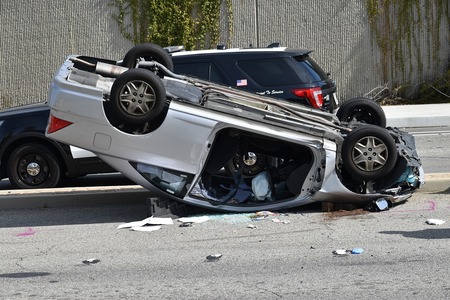
Accidents can happen at any time, and the aftermath can often leave you struggling to manage pain, discomfort, and limited mobility.
For instance, a recent car crash on Interstate 25 highway near Lone Tree resulted in the driver’s death. Colorado Community Media states that the Lone Tree police are seeking witnesses to the crash to come to a conclusion. While this was a fatal crash, such fiery accidents can cause life-long injuries like back pain. In such cases, one way to begin healing is by seeking specialized care, such as visiting a spinal decompression chiropractor in Lone Tree.
Whether it’s a car crash or a slip and fall, the body can experience a variety of injuries that impact daily life. Misalignment and persistent pain are among the many problems that can be resolved with chiropractic care. This can offer relief when conventional treatments may not suffice.
We will examine several important tactics and approaches for recuperating from typical accident injuries in this article.
-
Understanding Your Injury
Before you can begin the healing process, it’s important to understand the nature of your injury. Soft tissue damage, fractures, and joint injuries are just a few of the problems that can result from different incidents. The extent of the damage can have a big impact on how quickly you heal.
For instance, a simple sprain may heal with rest and ice. However, a more serious injury like a herniated disc may require a combination of treatments, including physical therapy, medications, or even surgery.
It is imperative that you see a doctor if you have a serious injury. They are able to diagnose you and provide a course of therapy that works for you. For example, suppose you are suffering from back pain after an injury. This can be caused by misalignment of the musculoskeletal system that might have been impaired due to the accident.
In such cases, you will need support from professionals like chiropractors. Treatment options like spinal decompression can help correct the positioning of the musculoskeletal system. As stated by Governor’s Park Chiropractic, inflammation reduces, and circulation increases when the pressure is released from the spine. This helps reduce pain and discomfort, helping you heal better and quicker.
Can an injury feel better in the short term but still be serious?
Yes, certain injuries, like sprains or fractures, may get well quickly but still need ongoing treatment. To ensure your injury has completely healed, seeing a doctor is important. Chronic illnesses that are more difficult to cure later on might result from ignoring persistent pain or discomfort.
-
Rest and Recovery
The body needs time to repair itself, and pushing through pain too soon can make things worse. Depending on the severity of your injury, this rest period can last anywhere from a few days to several weeks. While resting, avoid activities that exacerbate your pain. Even with small injuries, overuse of the afflicted region might eventually result in chronic problems.
While rest is essential, you also want to strike a balance. Complete immobility can lead to stiffness and weaken the muscles surrounding the injury. It’s essential to listen to your body and engage in gentle movements, as recommended by a healthcare professional, to avoid this. Start with low-impact activities, such as light stretching or walking, to keep the body active without causing further strain.
Consider the example of The Vampire Diaries star Nina Dobrev, who suffered a biking accident in May 2024. According to USA Today, she shared a before and after Instagram post. The first image showed her on an e-bike, while in the second, she was lying on a hospital bed. She wrote in the caption that while she is okay, there is a long road of recovery ahead.
Can I still exercise while recovering from an injury?
This depends on the type and degree of harm the injury has caused. Walking, cycling, and swimming are examples of low-impact exercises that can speed up your recovery from minor injuries. To prevent your condition from worsening during recuperation, always get medical advice before beginning an activity program.
-
Physical Therapy for Strength and Mobility
Once the initial pain starts to subside, it’s time to focus on physical therapy to rebuild strength and restore mobility. This is also essential to prevent any long-term health conditions, such as recurring pain or exacerbating other problems.
One example that highlights the importance of physical therapy is that of a stroke. As stated by an AHA Journal meta-analysis review, inactivity can lead to recurrent stroke. Therefore, suppose someone with a heart condition doesn’t get physical therapy after an accident; the chances of a subsequent heart attack increase.
Together, you and your physical therapist can create a program that focuses on the particular regions affected by your injury. The focus is typically on strengthening muscles, improving flexibility, and gradually increasing your range of motion.
By enhancing posture and coordination, physical therapy can help avoid further injuries in addition to the activities intended to repair the current one. Those who experience accidents that impair their alignment or repeated strain injuries will find this method especially beneficial.
How long does physical therapy usually take to show results?
The severity of your injury, age, and general health all affect how long it takes for physical therapy to show effects. Some people may see changes within a few weeks, while others may experience substantial changes over several months. The secret to getting the best results from your prescribed activities is to stay consistent.
-
Hot and Cold Therapy
As a ScienceDirect study notes, hot and cold therapy is an age-old method for managing pain and inflammation. After an accident, it can be quite helpful in the days and weeks that follow. Therefore, many athletes have recently adopted both these therapies to manage and prevent musculoskeletal injuries.
After an accident, cold compresses can be used right away to dull the pain and minimize swelling. In the first 48 hours after the accident, when inflammation is at its worst, this is very beneficial.
Heat treatment can be utilized to relax the muscles and increase blood flow to the affected area once the edema starts to go down. Heat can also help alleviate stiffness and promote the healing of soft tissues. Be sure to alternate between heat and cold as needed, and always use a towel or cloth to avoid direct contact with your skin.
-
Psychological Support for Emotional Healing
Injuries not only affect the body but can also take a toll on your mental and emotional well-being. A Frontiers Journal study shows that road traffic accident survivors face an increased risk of mental health conditions. The risk increases further with a delay in the recovery process.
Feelings of irritation, worry, or even despair might result from managing discomfort and a protracted healing time. It’s critical to recognize the psychological effects of an accident and, if required, get help.
If you’re having trouble dealing with the emotional fallout from your injury, think about seeing a counselor or therapist. A tried-and-true technique for stress and pain management, cognitive-behavioral therapy (CBT) assists people in concentrating on constructive ideas and actions. Making connections with people who have experienced similar things may also offer support and a sense of camaraderie.
It takes time, patience, and a diversified strategy to recover after an injury. You may maximize your recovery by combining at-home therapies like massage with expert care like physical therapy and chiropractic adjustments. Although healing takes time, you may achieve a full recovery if you have the appropriate plans in place. Remember to listen to what your body needs and give it ample time to heal.
